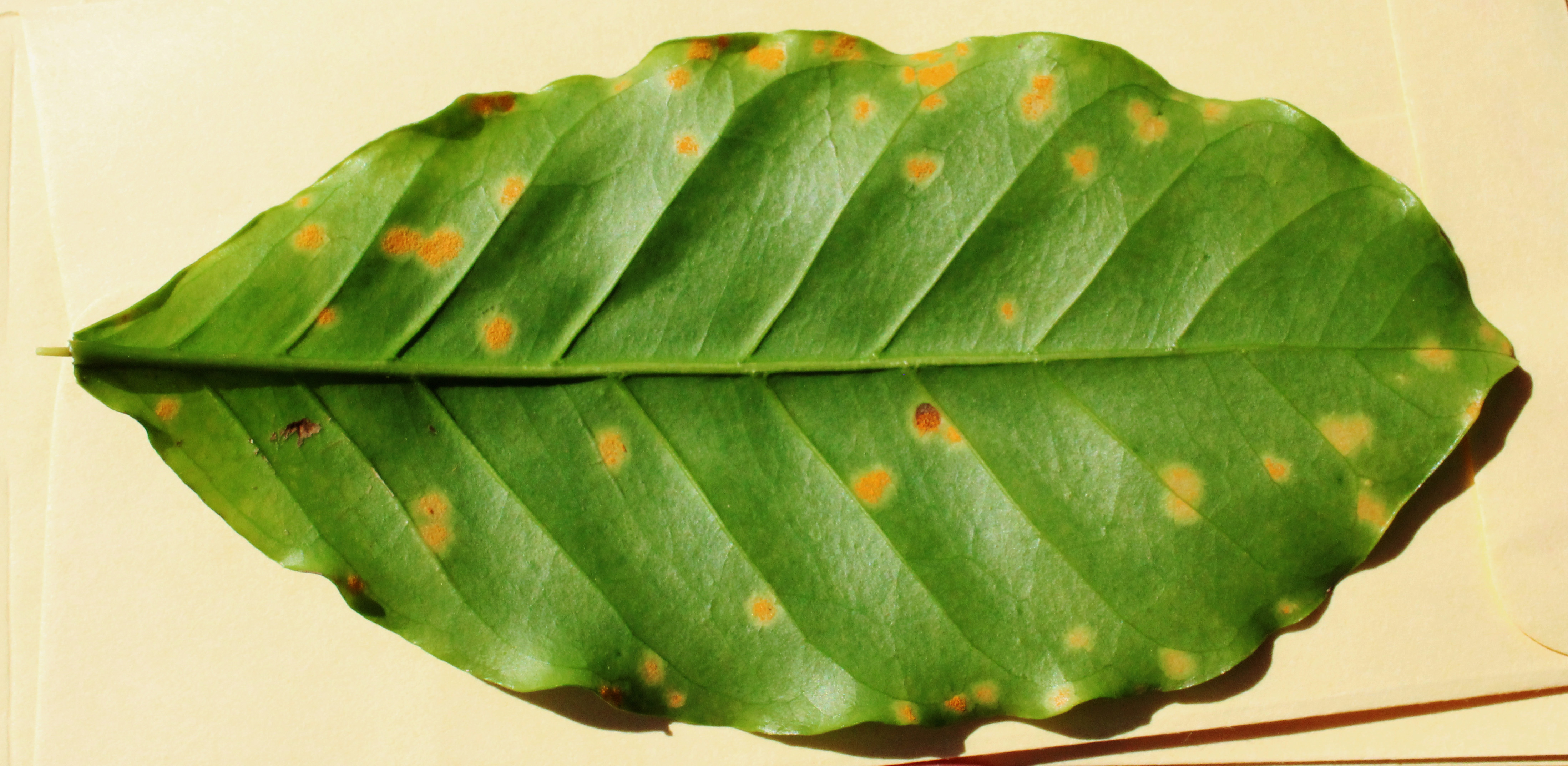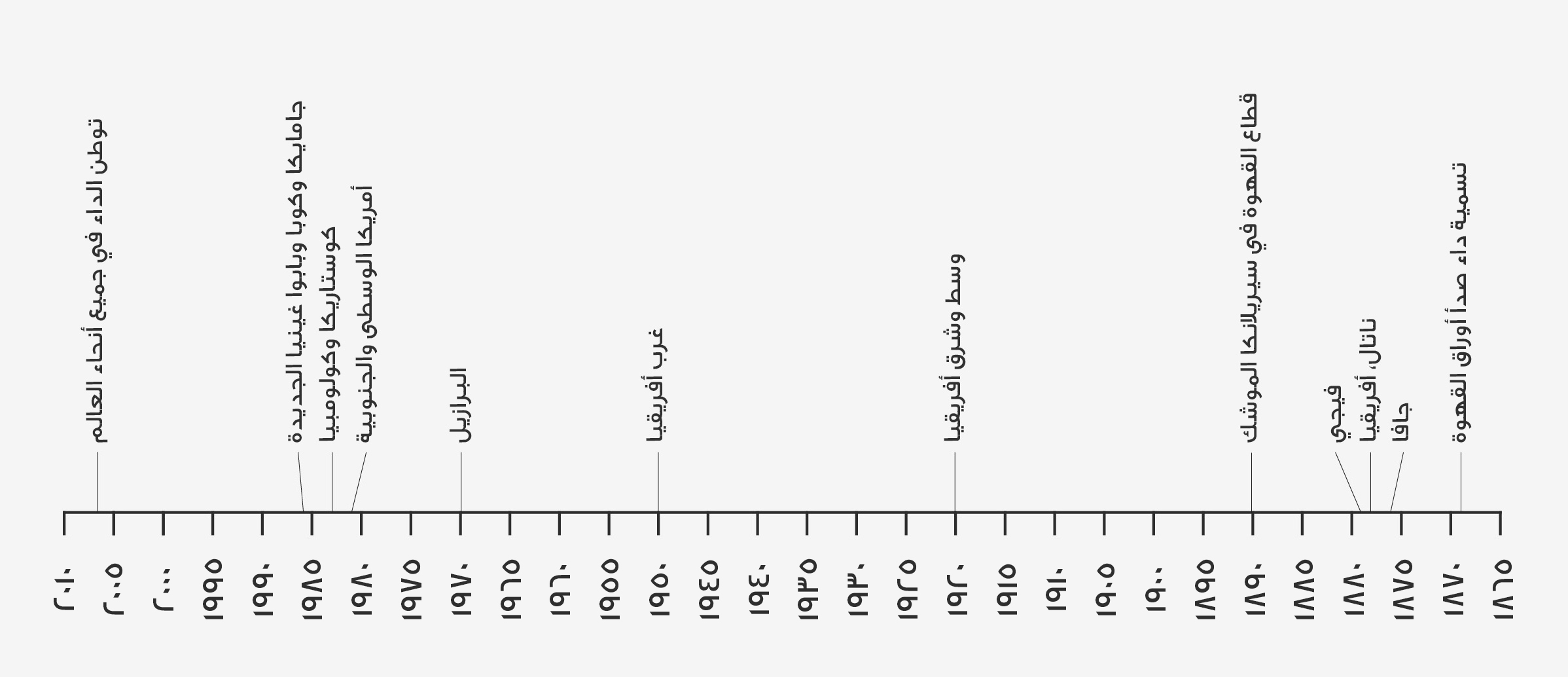داء صدأ أوراق نبات القهوة
تُظهر هذه الصورة الطفح النباتي أو صدأ أوراق القهوة منتشرًا على الجانب السفلي من ورقة قهوة. وهي من تصوير تيم ويليامز، بتصريح من المنظمة العالمية لأبحاث القهوة.
The fungi Hemileia vastatrix infects the undersides of the leaves of coffee plants, where it produces large, rust-coloured colonies of uredosori — a nice way of saying ‘pustules’. (See image above.) An outbreak of rust leads to the premature loss of leaves, drastic losses of yields, and, often, total crop failure. The first recorded outbreak of leaf rust occurred in 1861 near Lake Victoria (Silva et al., 2006), and in 1868 a huge outbreak of the fungi in Sri Lanka brought about an almost complete shift to growing tea instead of coffee on the island. Leaf rust has since spread throughout every growing region and is generally considered to be the pathogen that most drastically threatens the survival of coffee.
الجدول الزمني لانتشار داء صدأ أوراق القهوة ( كوهلر، 2018)
وقد أصاب الوباء أمريكا الوسطى لأول مرة في 2011-2012. وفي غضون عام، انتشرت الآفة في جميع أنحاء المنطقة، مما أثر على 70% من المزارع. وفقد أكثر من 1.7 مليون عامل في مجال القهوة وظائفهم، ونتجت عن ذلك أضرار وخسائر في الدخل بقيمة 3.2 مليار دولار أمريكي. وقد كان الضرر شديدًا لدرجة أن بعض العائلات تخلت عن زراعة القهوة تمامًا (المنظمة العالمية لأبحاث القهوة).
كيفية حدوث العدوى
Coffee leaf rust is classified as a biotrophic fungi. These fungi are totally dependent on living plant cells for their survival. The fungi attack the undersides of leaves. They first grow inside the stoma (pores) of a leaf in a shape that resembles an anchor (see diagram 1F, below). From this ‘anchor’, the fungi begins to produce hypha. In fungi, hypha are the equivalent of a tree’s roots. From the main stems of the hypha extend little tendrils known as haustoria.

